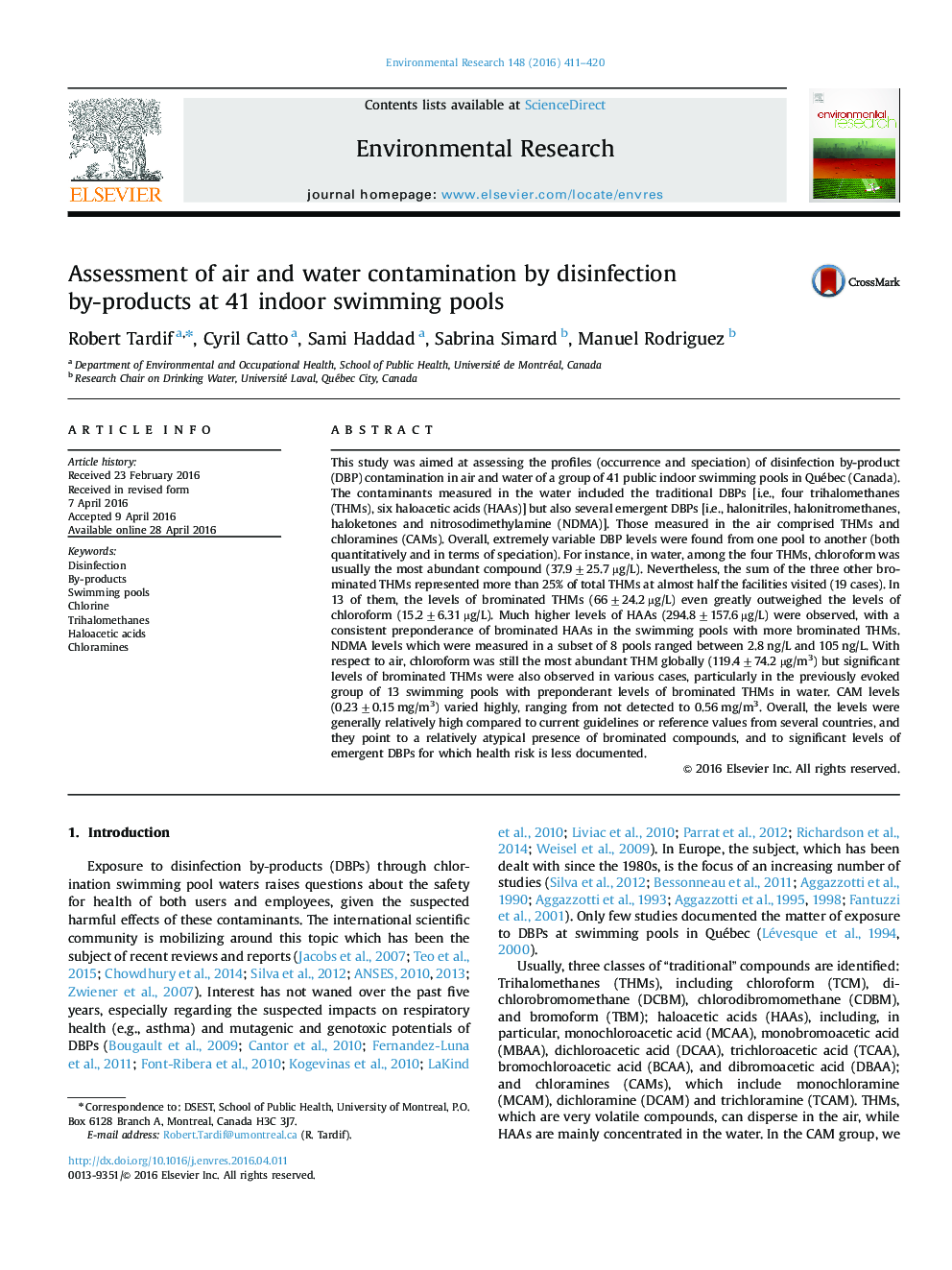| کد مقاله | کد نشریه | سال انتشار | مقاله انگلیسی | نسخه تمام متن |
|---|---|---|---|---|
| 6351580 | 1622555 | 2016 | 10 صفحه PDF | دانلود رایگان |
عنوان انگلیسی مقاله ISI
Assessment of air and water contamination by disinfection by-products at 41 indoor swimming pools
ترجمه فارسی عنوان
ارزیابی آلودگی هوا و آب توسط مواد ضدعفونی کننده در 41 استخر شنا استخر
دانلود مقاله + سفارش ترجمه
دانلود مقاله ISI انگلیسی
رایگان برای ایرانیان
کلمات کلیدی
موضوعات مرتبط
علوم زیستی و بیوفناوری
علوم محیط زیست
بهداشت، سم شناسی و جهش زایی
چکیده انگلیسی
This study was aimed at assessing the profiles (occurrence and speciation) of disinfection by-product (DBP) contamination in air and water of a group of 41 public indoor swimming pools in Québec (Canada). The contaminants measured in the water included the traditional DBPs [i.e., four trihalomethanes (THMs), six haloacetic acids (HAAs)] but also several emergent DBPs [i.e., halonitriles, halonitromethanes, haloketones and nitrosodimethylamine (NDMA)]. Those measured in the air comprised THMs and chloramines (CAMs). Overall, extremely variable DBP levels were found from one pool to another (both quantitatively and in terms of speciation). For instance, in water, among the four THMs, chloroform was usually the most abundant compound (37.9±25.7 µg/L). Nevertheless, the sum of the three other brominated THMs represented more than 25% of total THMs at almost half the facilities visited (19 cases). In 13 of them, the levels of brominated THMs (66±24.2 µg/L) even greatly outweighed the levels of chloroform (15.2±6.31 µg/L). Much higher levels of HAAs (294.8±157.6 µg/L) were observed, with a consistent preponderance of brominated HAAs in the swimming pools with more brominated THMs. NDMA levels which were measured in a subset of 8 pools ranged between 2.8 ng/L and 105 ng/L. With respect to air, chloroform was still the most abundant THM globally (119.4±74.2 µg/m3) but significant levels of brominated THMs were also observed in various cases, particularly in the previously evoked group of 13 swimming pools with preponderant levels of brominated THMs in water. CAM levels (0.23±0.15 mg/m3) varied highly, ranging from not detected to 0.56 mg/m3. Overall, the levels were generally relatively high compared to current guidelines or reference values from several countries, and they point to a relatively atypical presence of brominated compounds, and to significant levels of emergent DBPs for which health risk is less documented.
ناشر
Database: Elsevier - ScienceDirect (ساینس دایرکت)
Journal: Environmental Research - Volume 148, July 2016, Pages 411-420
Journal: Environmental Research - Volume 148, July 2016, Pages 411-420
نویسندگان
Robert Tardif, Cyril Catto, Sami Haddad, Sabrina Simard, Manuel Rodriguez,
